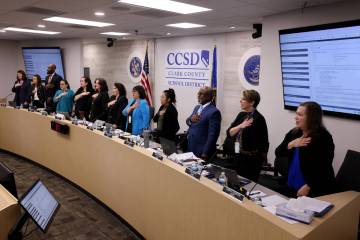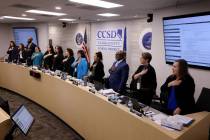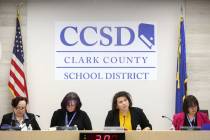EDITORIAL: National Education Association to students: What do we care?
The late Albert Shanker, longtime head of the American Federation of Teachers, is often credited with stating, “When schoolchildren start paying union dues, that’s when I’ll start representing the interests of schoolchildren.” Whether the quote is apocryphal or not — his defenders maintain no evidence exists he uttered the words — the entrenched education establishment seems hell-bent on proving it an accurate description of its attitude toward the students whom union members are supposed to educate.
Consider a resolution at the 2019 National Education Association’s annual convention earlier this month in Houston.
Among more than 150 “new business items” considered by the union’s 6,000 delegates was a proposal to more aggressively emphasize student achievement. The NEA “will re-dedicate itself to the pursuit of increased student learning in every public school in America by putting a renewed emphasis on quality education,” reads New Business Item 2. It proposes every union initiative be measured by whether it promotes “the development of students as lifelong learners.”
Why this should be necessary for an organization that purports a devotion to “the children” remains a mystery. But proponents of expanded opportunity and education reform will take what they can get.
Alas, New Business Item 2 failed in a closed-door vote, notes Nat Malkus of the American Enterprise Institute. Yes, indeed, members of the country’s largest and most powerful teachers union couldn’t bring themselves to embrace an effort to promote learning in the nation’s public schools. Meanwhile, Mr. Malkus reports, delegates did manage to voice support for abortion rights, various “social justice” initiatives and a plethora of identity politics resolutions.
While the NEA was holding its annual meet-and-greet, officials in Providence, R.I., were pondering a Johns Hopkins report on the state of the city’s public school system.
Tests scores reveal that fewer than 10 percent of Providence eighth-graders are proficient in English, while just 5 percent are up to par in math. “Very little visible student learning was going on in the majority of the classrooms and schools we visited,” the report noted.
The urban district spends $18,000 per pupil — almost double what the Clark County School District spends — but collective bargaining and union intransigence has made it virtually impossible to fire bad teachers. Discipline is lax, the report found, in part because of de facto quotas intended to ensure minority students don’t bear the brunt of suspensions.
Amid this colossal failure, the report noted that the “overall perspective” of the Providence Teachers Union president is “that the (Providence Public School District) and the union are working effectively.”
Satire is no more.




























